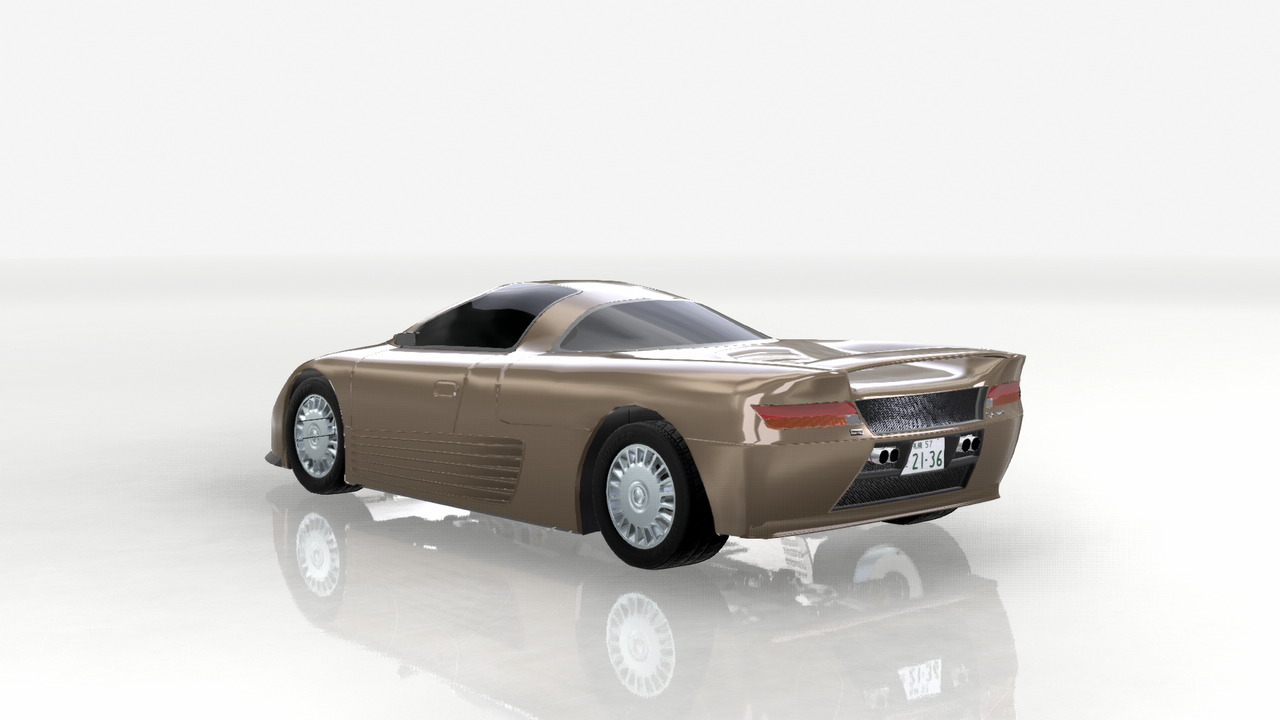Integral to the Shimizu Lyskamm was a twin-turbocharged 4-litre DOHC V8 producing a massive 370 kW (496 hp) and 559 Nm (412 ft-lb) of power and torque, respectively. As was the standard for top-tier performance cars at the time, the engine was positioned between the cockpit and rear axle in a rear-midship layout. Most cars with this configuration, however, were strictly performance vehicles, with little attention paid towards comfort. The Lyskamm, however, was quite different.
Described by some as half supercar and half grand tourer, the Lyskamm incorporated extensive use of acoustic measures, including a thicker firewall, as well as generously padded seats and all-wheel drive. To offset the increase in weight, a fibreglass body was used, resulting in a total weight of 1390 kg (3064 lb).
With a top speed of 315 kph (196 mph) and a 0-100 time of 4.1 seconds, the futuristic Lyskamm could be considered a forerunner of the modern hypercar. Having spent four years in development, it first entered the market in 1987, but quickly became a hit and outshone its European competitors.
Lyskamm


Layout M4
Engine Name R-40
Aspiration TB
Displacement 3990 cc
Peak Power 370 kW (496 hp) @ 6900 RPM
Peak Torque 559 Nm (412 ft-lb) @ 4500 RPM
Weight 1390 kg (3064 lb)
Weight Distribution Front/Rear 41/59
STARTING PRICE
¥5,500,000 JDM
$51,000 USDM
COLOURS
Fiery Red
Fiery Orange
Summer Blue
Space Blue
Titanium Bronze
Alpine White
Grey Fog
Piano Black